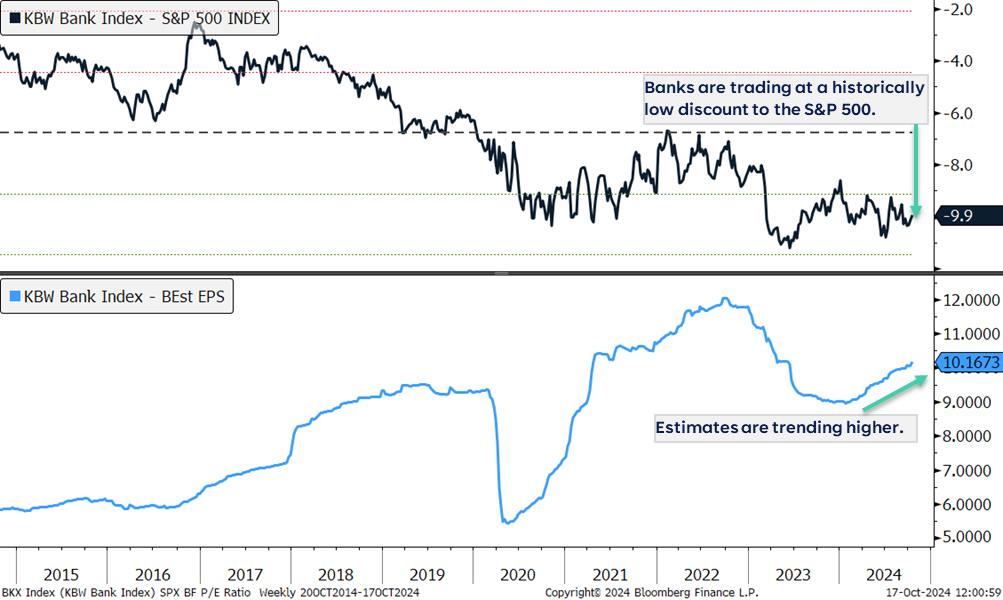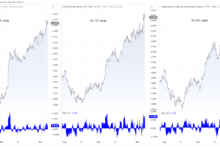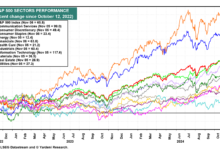Why Banking Stocks Remain a Great Bet at Current Valuations
The big banks officially kicked off the third-quarter earnings season last Friday. At a high level, results have been good enough to drive the broader banking space to year-to-date highs. The return of animal spirits in deal-making has been a major theme as investment banking revenue surged across most major banks. A jump in asset management fees, better-than-expected sales and trading activity, and improving net interest income outlooks have been other key themes of the reporting season thus far.
Management also appears constructive on the economic backdrop. According to JPMorgan Chase’s (JPM) Chief Financial Officer, Jeremey Barnum, the bank’s results this quarter were “consistent with a soft landing,” adding, “The consumer is fine and remains in effect on strong footing.”
His comments were echoed by several others in the C-suite, where recession talk was limited. As highlighted below, among the 17 companies within the KBW Bank Index that have reported third-quarter results, the mentions of “recession” or “economic slowdown” during earnings calls have consistently dropped throughout the year. Furthermore, the mentions of “soft landing” or “economic growth” have started to improve this quarter.
Management Changes Its Tune on the Economy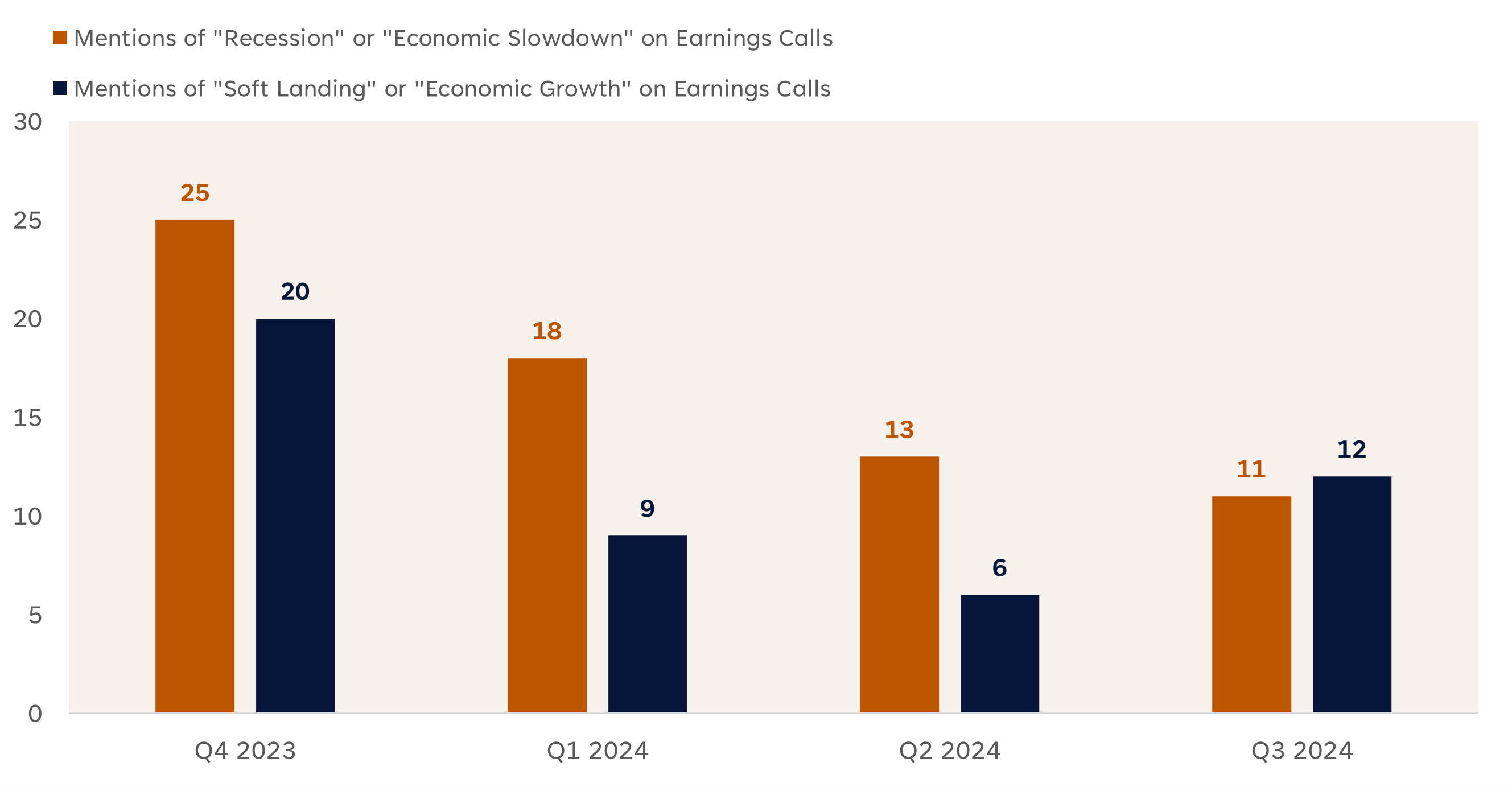
Source: LPL Research, Bloomberg 10/17/24
Disclosures: Forecasts may not develop as predicted.
Investors have welcomed earnings season results by bidding bank stocks up significantly over the last two weeks. Analysts have reacted by revising earnings per share (EPS) estimates higher. As highlighted below, Street expectations for earnings across the KBW Bank Index continue to improve.
Looking ahead, earnings are expected to grow nearly 13% on a forward 12-month basis. And while valuations on an absolute basis have normalized amid the recent rally, the KBW Bank Index remains relatively cheap to the broader market. Based on a forward price-to-earnings (P/E) multiple, the index is trading at nearly a 10-point discount to the S&P 500, over one standard deviation below its longer-term average discount of 6.8.
Bank Valuations Remain Relatively Cheap as Earnings Improve
Source: LPL Research, Bloomberg 10/17/24
Disclosures: Indexes are unmanaged and cannot be invested directly. Past performance is no guarantee of future results. The economic forecasts set forth may not develop as predicted.
Technical Setup
The KBW Bank Index has been trending higher since breaking out of a major bottom earlier this year. After spending some time in the overbought penalty box this summer, the uptrend has resumed with the index recently surpassing key resistance at 116, leaving the 2022 highs near 150 as the next major hurdle to clear.
Despite near-term overbought conditions, momentum and market breadth measures suggest this rally has more room to go. Every stock within the KBW Bank Index remains above its 200-day moving average (DMA), while nearly every member registered a recent 52-week high. Relative strength is also improving. As highlighted in the bottom panel of the chart below, the KBW Bank Index vs. S&P 500 ratio chart remains in an uptrend and above its 200-dma, pointing to continued bank outperformance ahead.
Banks Breakout to Year-To-Date Highs
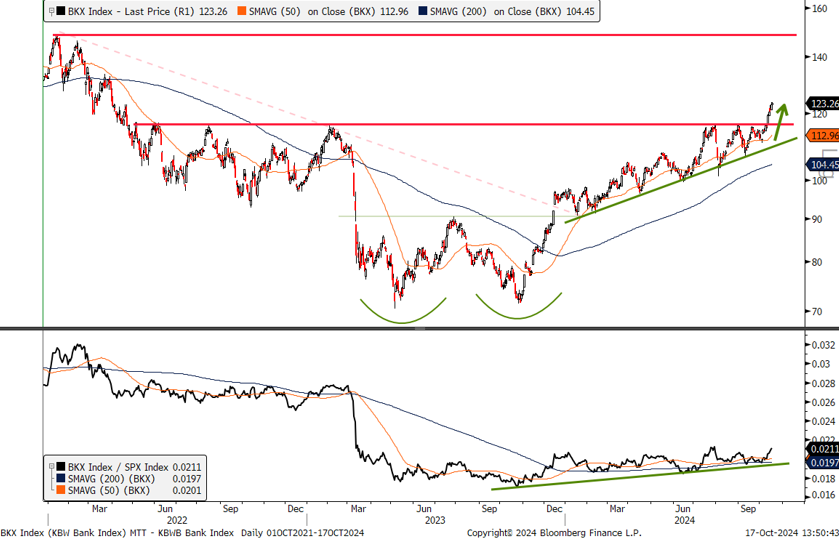
Source: LPL Research, Bloomberg 10/17/24
Disclosures: Indexes are unmanaged and cannot be invested in directly. Past performance is no guarantee of future results.
Summary
After consolidating over the summer, momentum in the banking space is back. Earnings season thus far has demonstrated a robust investment banking backdrop with better-than-expected sales and trading revenue. The outlook for net interest income has also improved amid a backdrop of a steeper yield curve and forecasts for continued rate cuts from the Federal Reserve.
Despite the latest rally, banks remain cheap on a relative basis and technically attractive. Risks to the rally include near-term overbought conditions, regulatory uncertainty ahead of the upcoming election, and the potential for stress within commercial real estate loan books, especially at the regional banking level.



